Black Atlantic: Power, People, Resistance @ The Fitzwilliam Museum
8th September 2023 – 7th January 2024
What happens when an institution realises that a significant part of its funding and collection comes from the proceeds of the Trans-Atlantic slave trade? Does it continue to brush the issue under the carpet or does it confront it?
Undeniably the issue is one gaining more attention and provoking more action. One only has to look at Edward Colston’s statue in Bristol and how it went from public plinth to the muddy depths of the Bristol harbour at the hands of demonstrators, to realise that the debate and actions are very much at the forefront of public discourse around the wealth created through slavery and Britain’s role in it.
The Fitzwilliam Museum is one such institution faced with this dilemma. Its creation only possible through the donations of vast sums of money, literature and art to the University by Richard Fitzwilliam in 1816. The problem, of course, was that this ‘philanthropy’ was only possible through the wealth accrued by his grandfather and his involvement in the Trans-Atlantic slave trade.
The brutality of the Atlantic slave trade is well documented and the exhibition re-emphasises this, leaving the viewer with no ambiguity about its monstrosity and brutalisation. What the exhibition does successfully is highlight the changes in the depiction of the black African in European art before and after the start of the Trans-Atlantic trade. How this trade had the effect of dehumanising a society.
In addition to this, the exhibition gave a voice to contemporary black artists. Their voice the beginnings of an attempt to redress centuries of injustice.
Below are some of the thought provoking works and discussions:
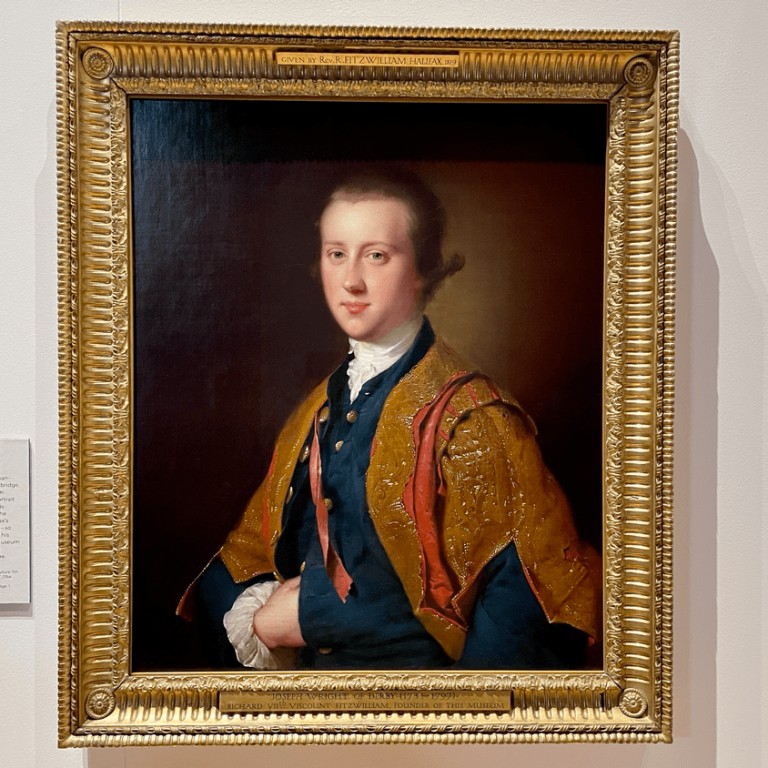
‘Richard Fitzwilliam’ (1764) by Joseph Wright of Derby
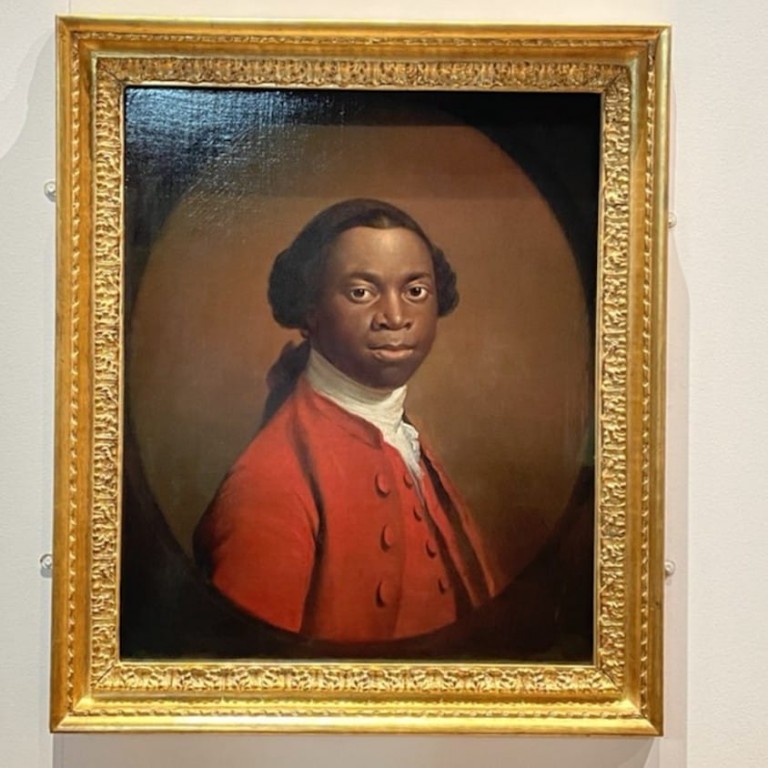
‘Portrait of an African’ recently renamed as ‘Portrait of a man in a red suit’
The first two paintings that the viewer encounters in the exhibition. Richard Fitzwilliam on the left and an unnamed black person on the right. The point being made is that despite his smart appearance, nothing is known about the black man. Who he was? What did he do? What was his role in society? 18th Century European society did not feel it necessary to attribute these details and facts to this black subject. Who gets remembered and why, is a pertinent question.
Before the 1600s
What is startling about European depictions of black Africans is how it changed at the time of the Trans–Atlantic slave trade.
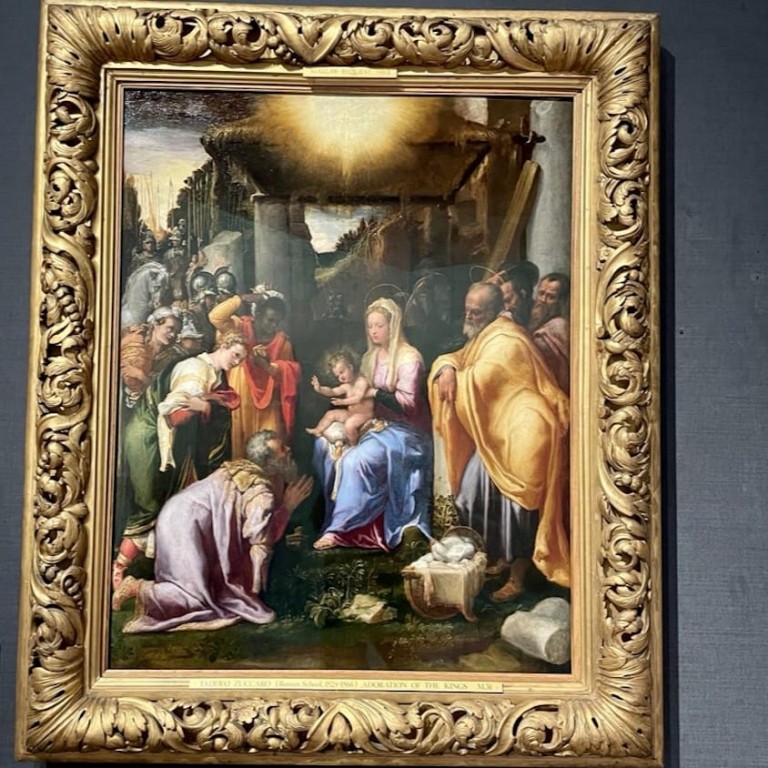
‘Adoration of the Kings’ by Taddeo Zuccari (1529 – 1566)
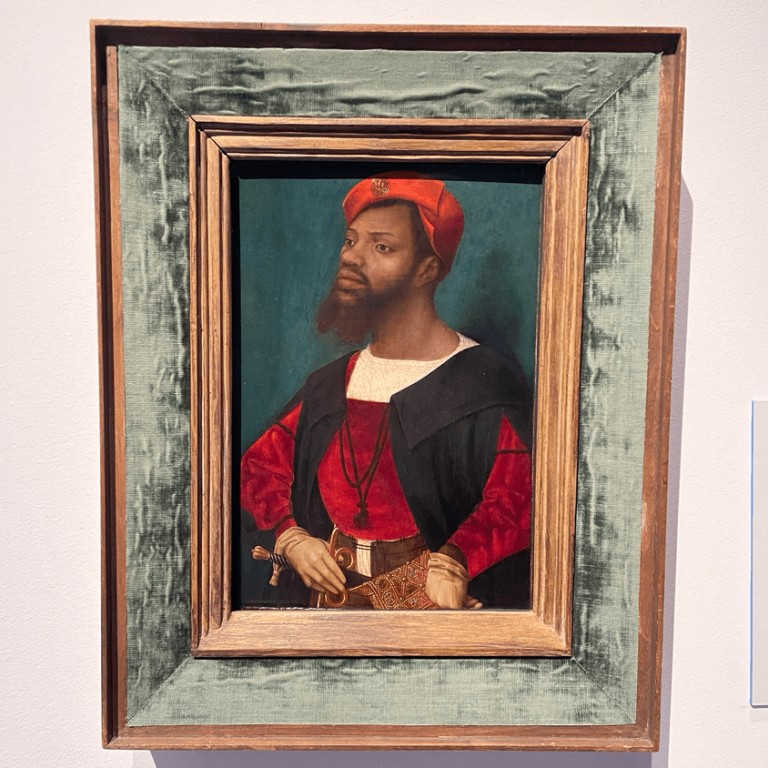
‘A man of status’ by Jan Mostaert (1475 – 1552)
The exhibition argues that depictions of the black man in European paintings before the slave trade, often showed them as equals. Noble and well dressed. In Zuccari’s ‘Adoration of the Kings’ one of the three kings visiting the newly born baby Jesus is black. In Mostaert’s ‘A man of status’, although his name is not given, the black man is clearly someone of importance and of a certain power. This contrasts with artwork produced during the time of the Trans-Atlantic slave trade, in which, if blacks are depicted, it is usually in a subservient role. It was a time when the Royal Society was publishing racist science ‘proving’ the inferiority of the black African. The notion that a black was therefore in any way equal to white Europeans became completely erased from the landscape.
Confronting erasure
One of the exhibition’s strengths is that it has given a voice to contemporary black artists and allowed them to tackle the centuries of black erasure and subservience depicted in European art.
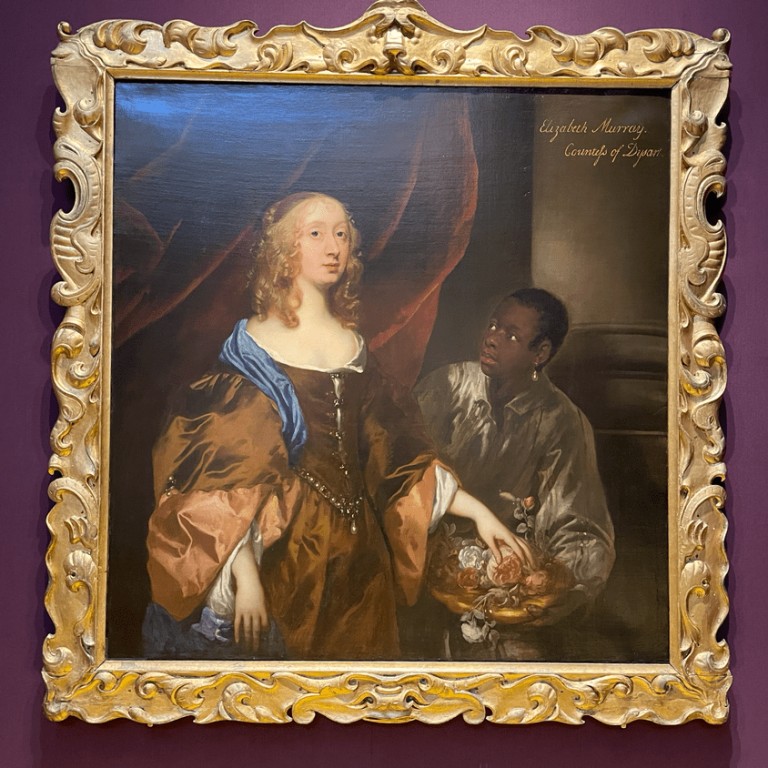
‘Portrait of Elizabeth Murray’ (1651) by Peter Lely
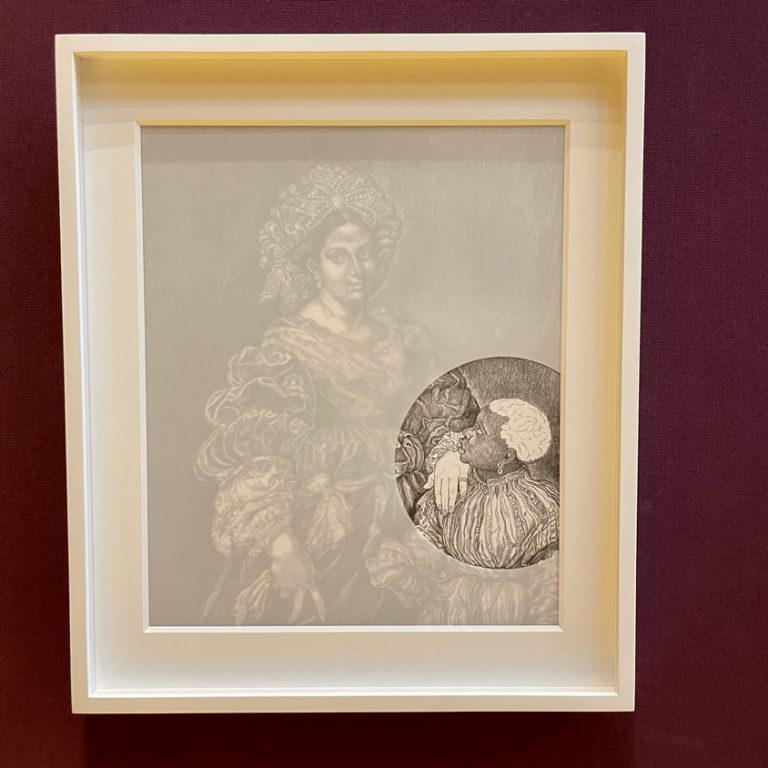
‘Spotlight’ (2022) by Barbara Walker
In Peter Lely’s 1651 ‘Portrait of Elizabeth Murray’, the light falls on Elizabeth Murray, giving her skin a subtle luminosity. Lurking in the background, in the shadows, one can only assume is the black servant looking deferentially up at the Duchess. Barbara Walker’s ‘Spotlight’ subverts what is visible and prominent and what is not. Taking a similar image the black child is made visible whist the lady obscured by tracing paper. The eyes are therefore redirected towards the black boy.
Walker uses a similar strategy in some of her other works too.
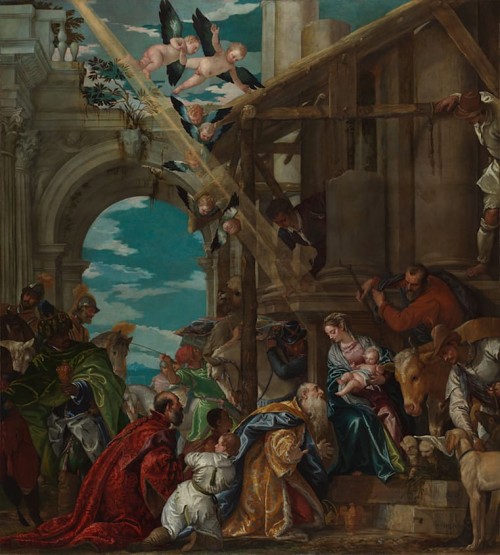
‘Adoration of the Kings’ (1573) by Paolo Veronese
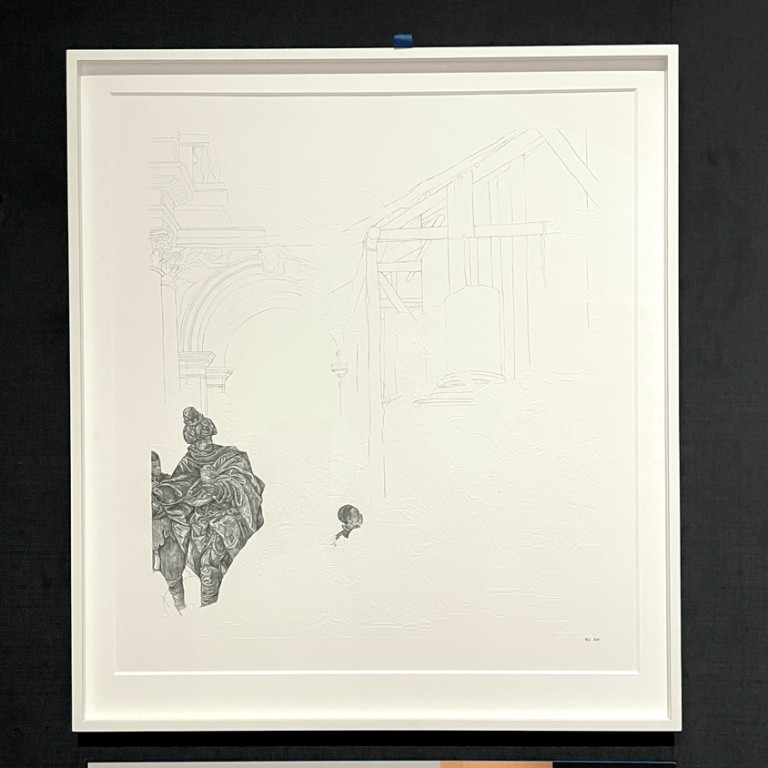
‘Adoration of the Kings’ by Barbara Walker
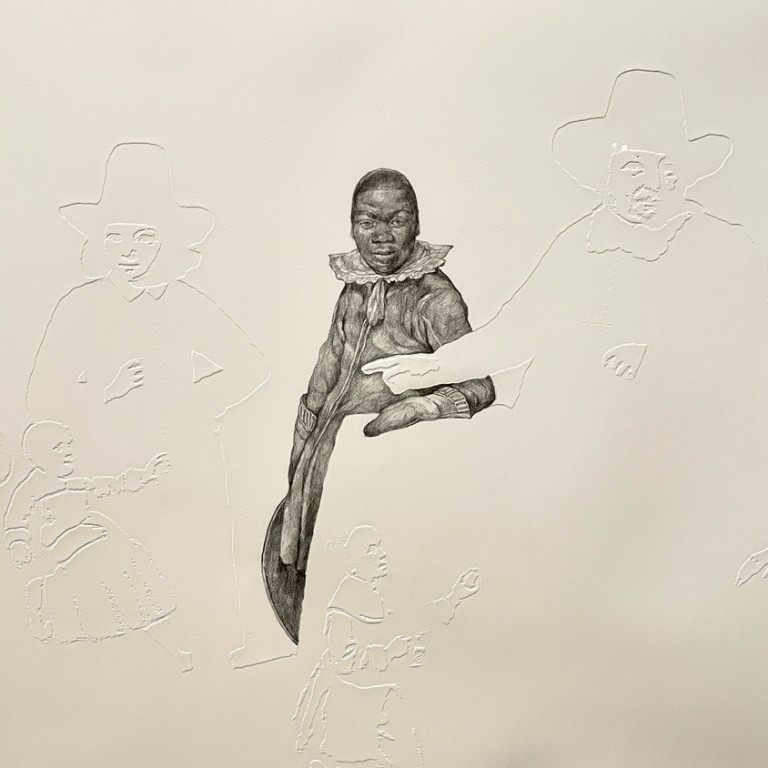
Vanishing Point 29 (Duyster) (2021) by Barbara Walker
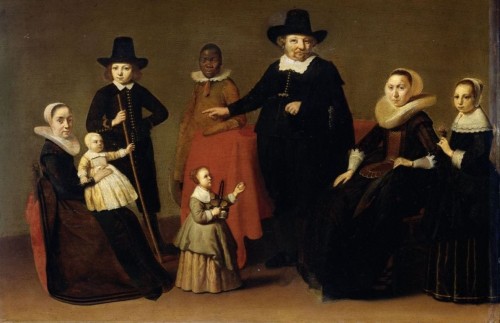
Family Portrait with “Black man” (c.1633) by Willem Duyster
In each of the cases above Walker has deliberately accentuated the presence of the black figures by erasing the rest of the original scenes.
Jacqueline Bishop’s ‘History at the dinner table’ takes a different and less literal approach to the question of erasure of the black experience during the time of slavery. Growing up in Jamaica, Bishop recalls the family’s finest dinner service with depictions of palaces, royal coaches and the like. Images completely detached from the reality of her life and of those around her. Bishop reframes this with a bone china dinner service depicting the life of enslaved women. Focussing not only on the brutality meted out on the women but also their enduring resistance, dignity and courage.
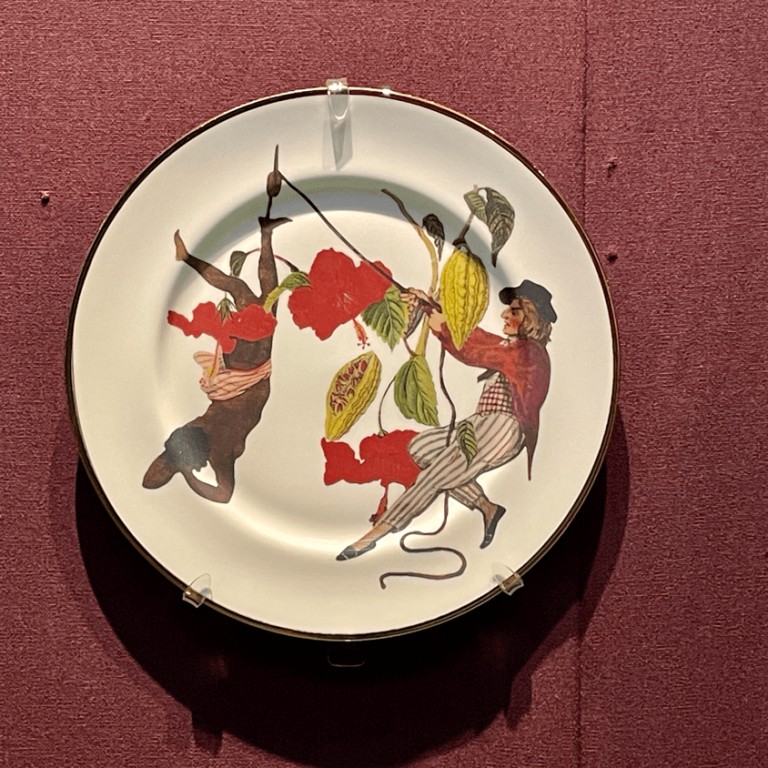
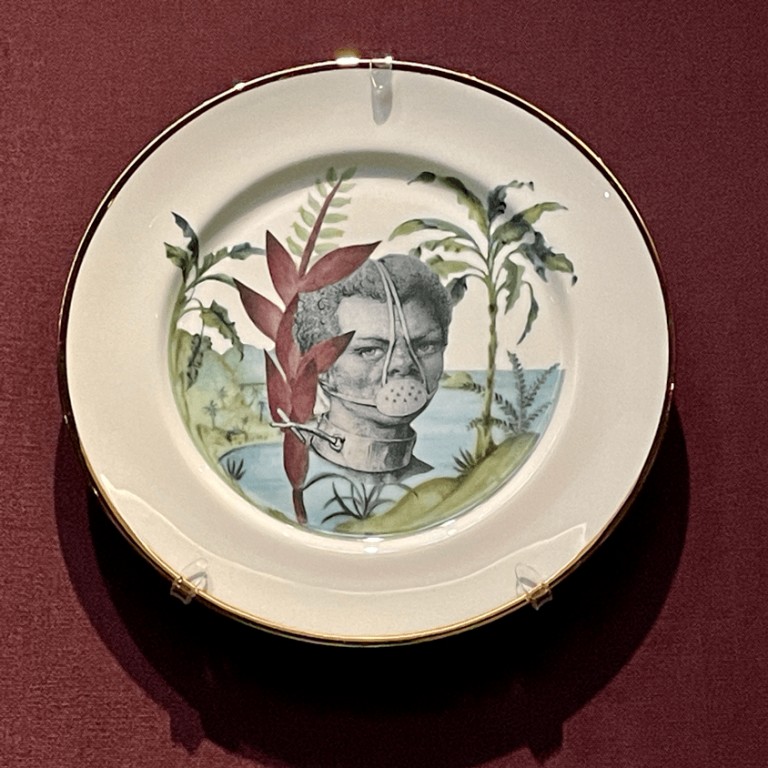
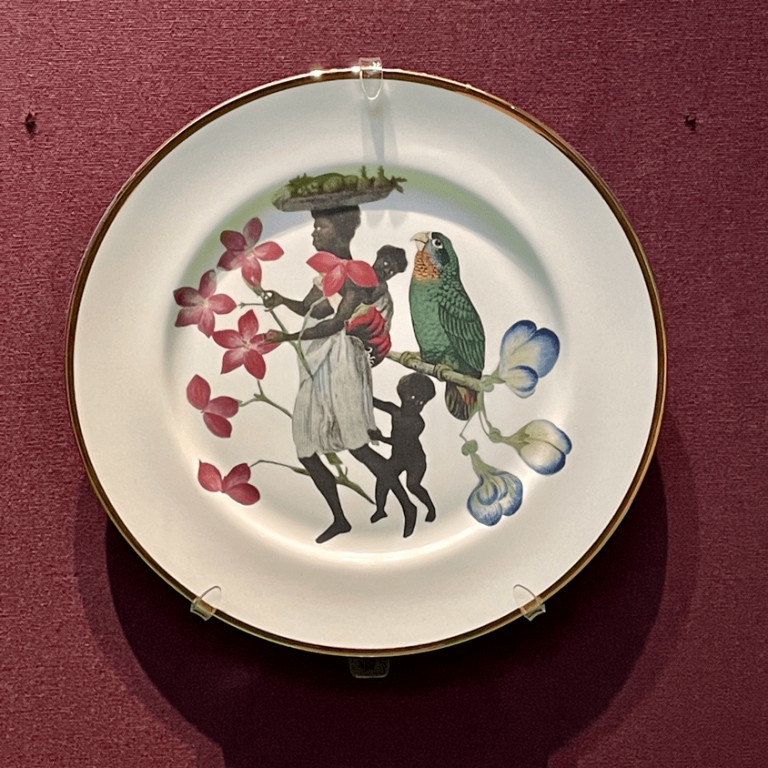
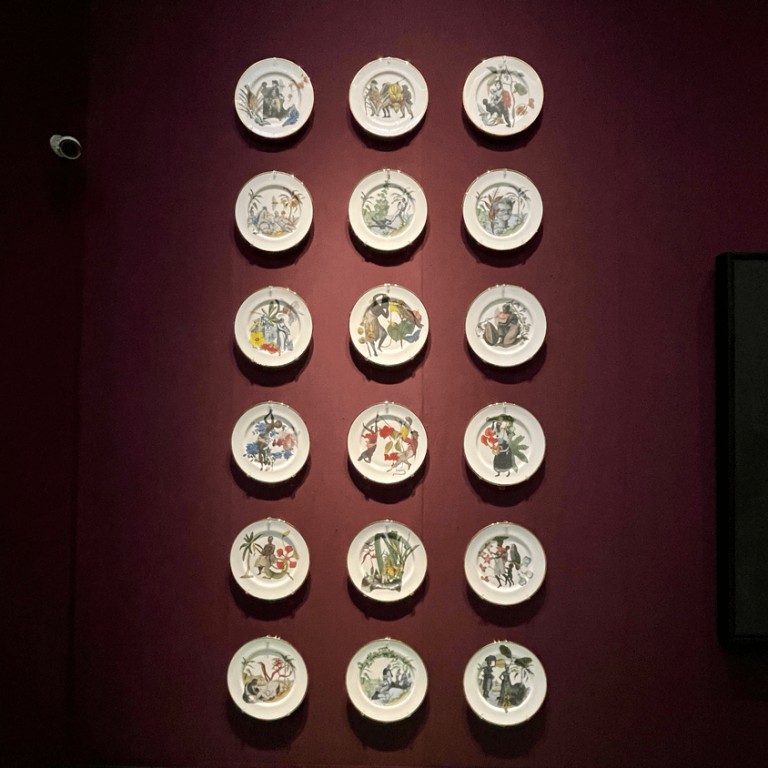
‘History at the Dinner Table’ (2021) by Jacqueline Bishop
The Conceptual
No less powerful was Donald Locke’s conceptual work ‘Plantation Piece’.
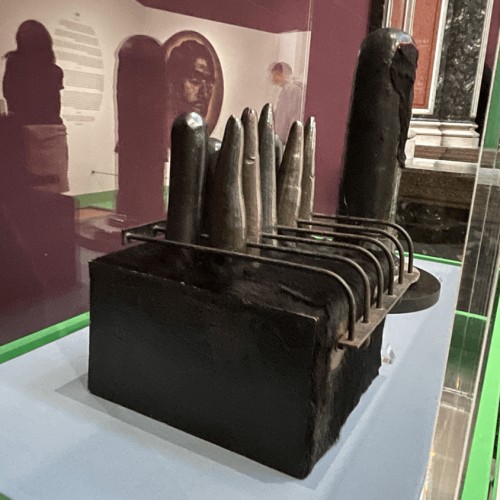
‘Plantation Piece’ (1973) – Donald Locke
Bullet like forms, possibly reminiscent of sugar canes or phalluses, tightly arranged within a restrictive grid. Speaking both of restraint and forced loss of identity imposed by the plantation system. The human turned slave both entrapped and subjugated.
This exhibition leaves the viewer in no doubt about the two faces of the Trans-Atlantic slave trade. On the one side you have the forced incarceration of millions of African people and on the other side the wealth that their labours and suffering created. It is that wealth that benefited and continues to benefit institutions such as the Fitzwilliam. The fact that the museum is now highlighting this is to be applauded, however the question remains; is this type of exhibition enough?